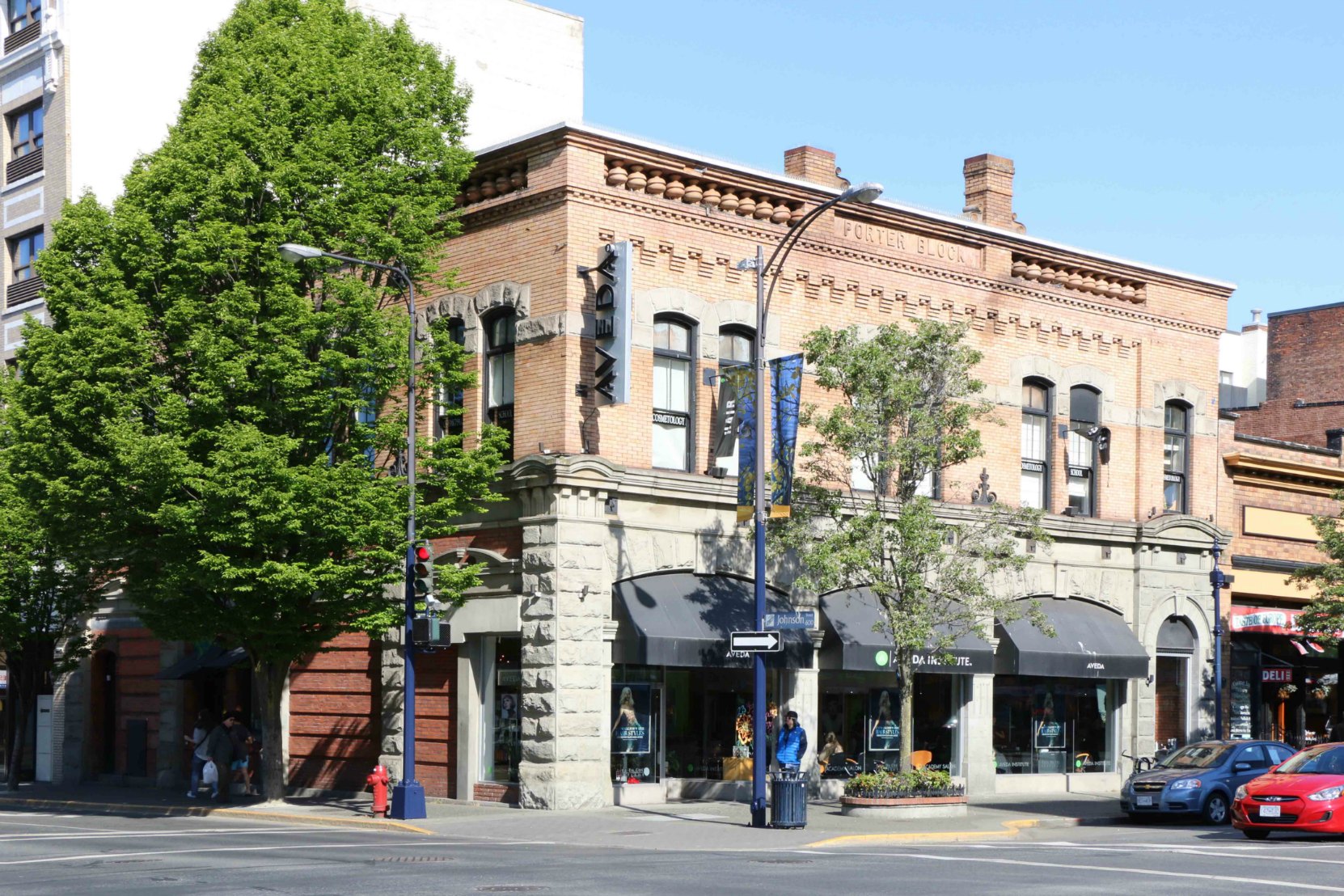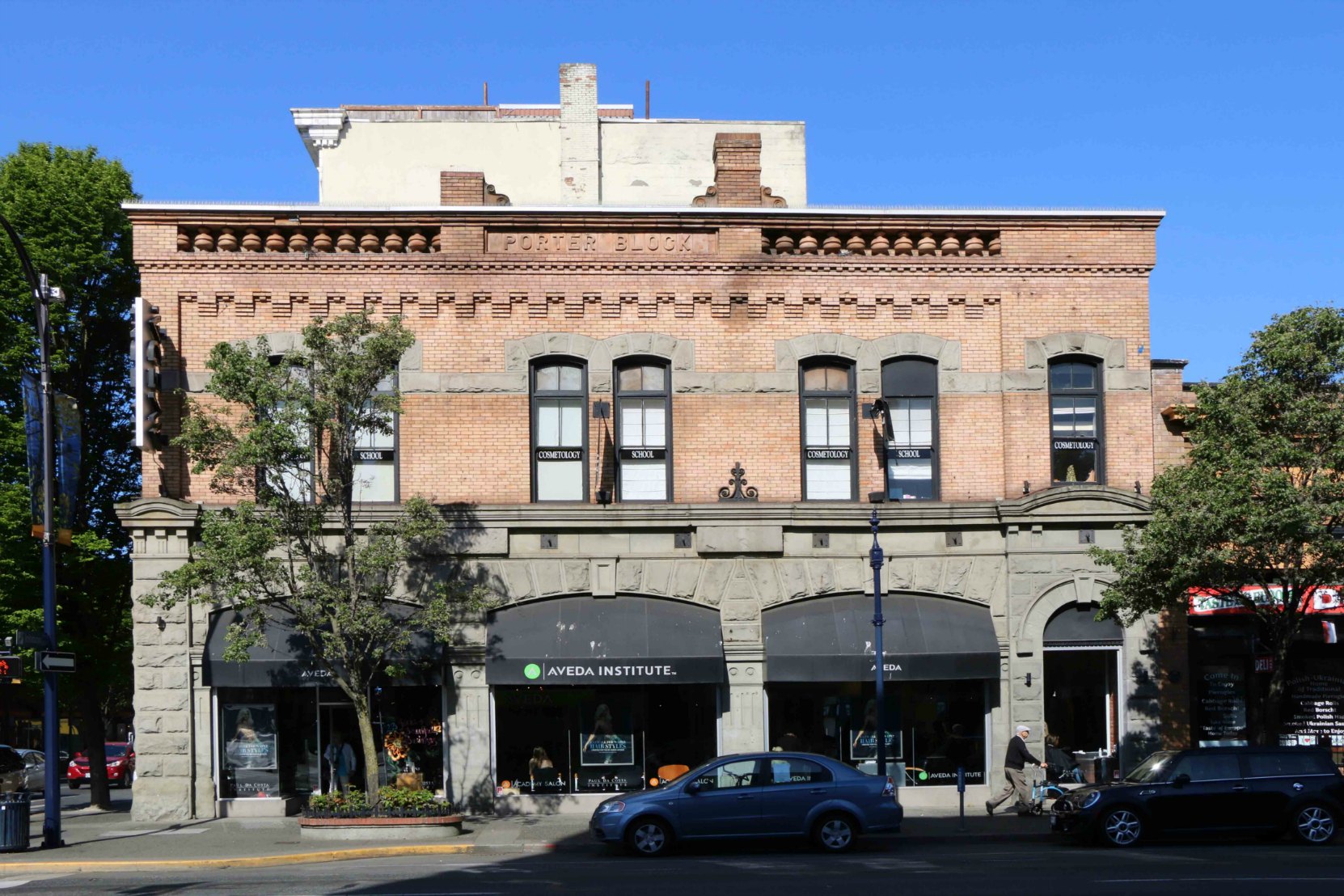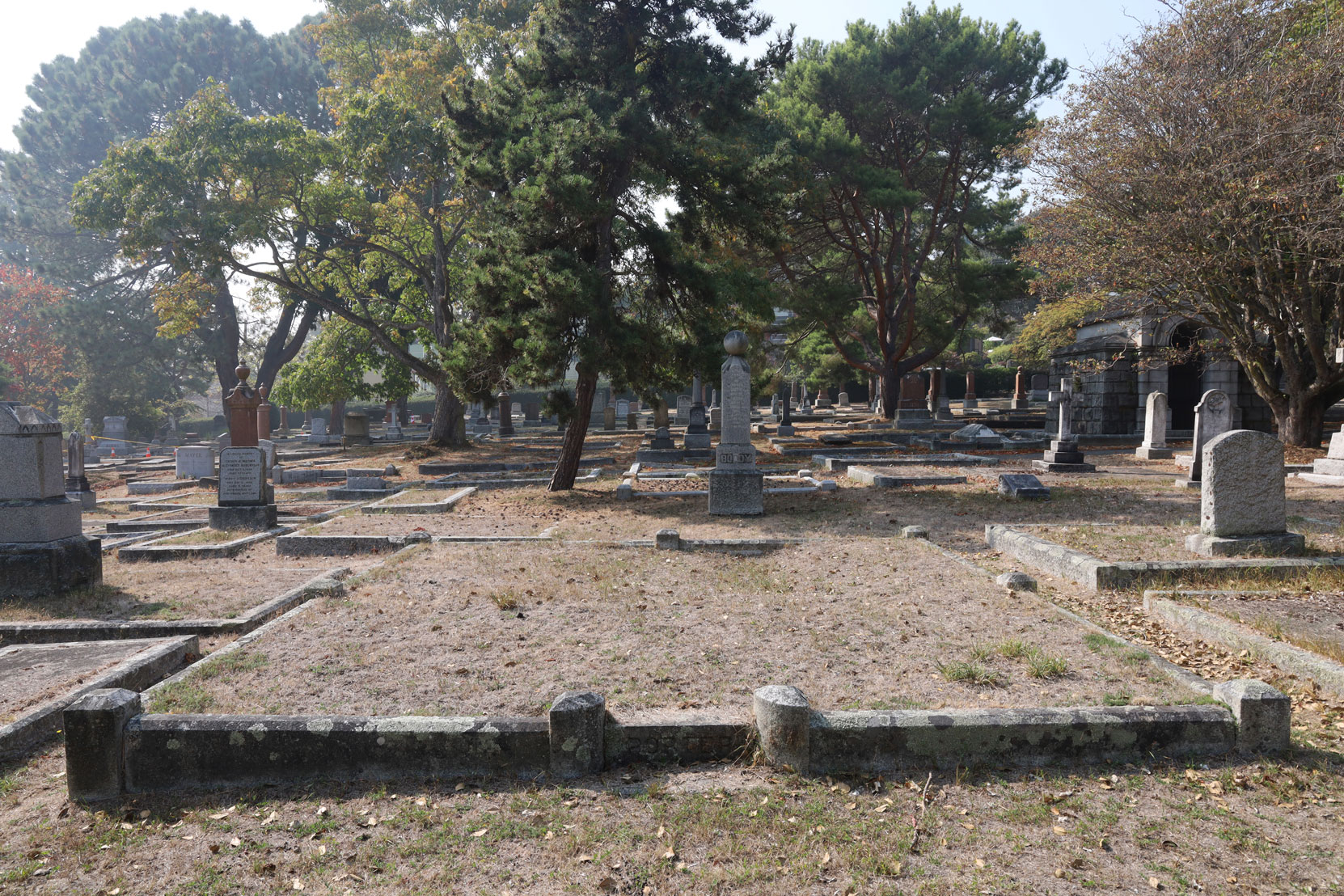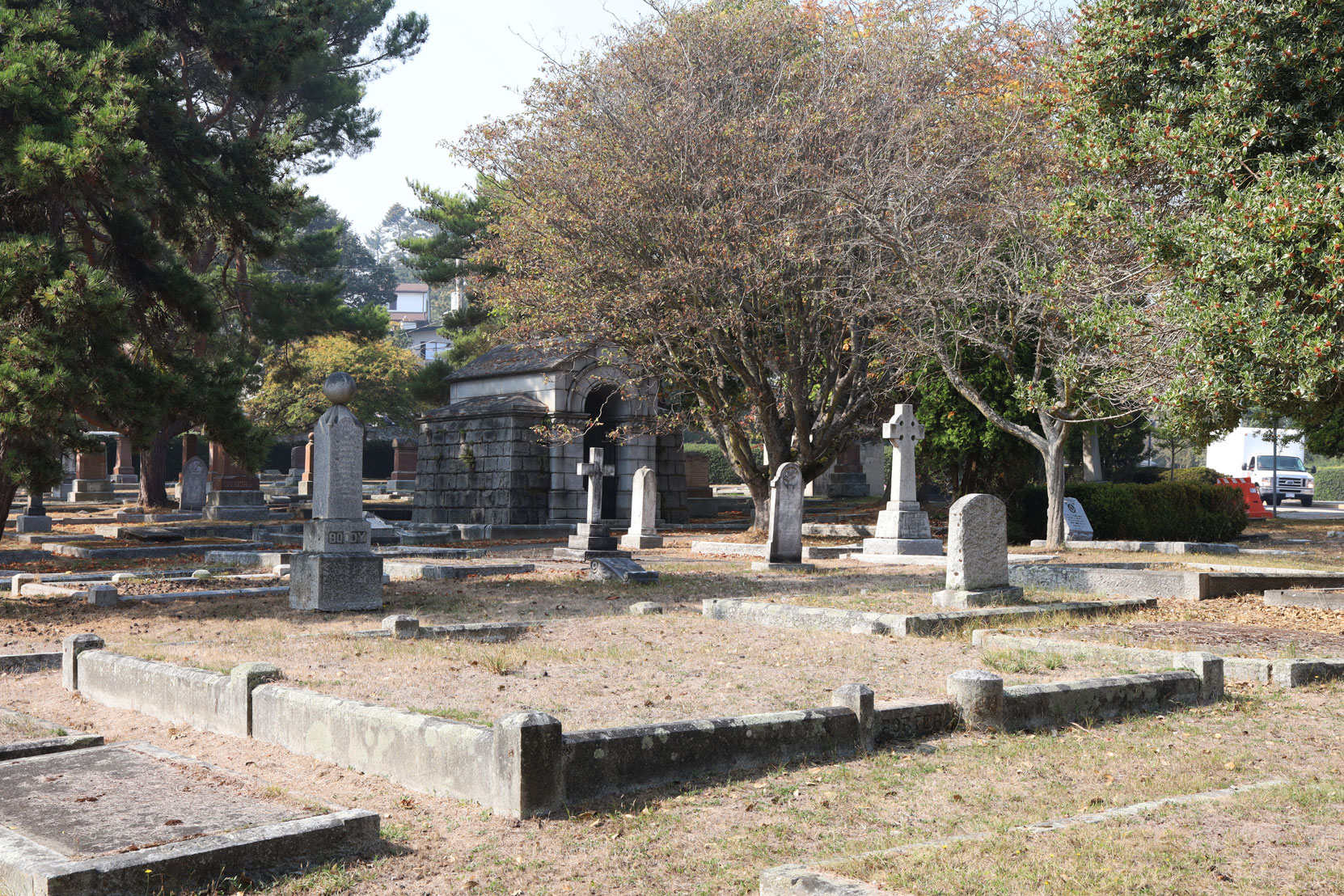Vancouver Island Masonic History Project
Robert John Porter (1867-1922) was a member of Victoria-Columbia No. 1 in Victoria. He served on Victoria City Council and as Mayor of Victoria in 1918-1921.
He operated a butcher shop under the name R.J. Porter & Sons. In 1900 he retained architect William Ridgway Wilson to build a business premises for R.J. Porter & Sons which is still standing at 1402-1404 Douglas Street in downtown Victoria. His house, designed and built in 1898 by architect Samuel Maclure, is still standing at 649 Superior Street.


Here are links to some historic photos of the Porter Block and Robert John Porter:
- BC Archives photo B-09326 – Robert John Porter, as Mayor of Victoria, circa 1919-1921
- BC Archives photo B-09327 – Flora Porter, Robert J. Porter’s wife, circa 1910
- BC Archives photo I-01864 – Porter Block, 1947. Photographer: Duncan Macphail
- BC Archives photo I-01578 – Porter Block, 1412 Douglas Street and 1414 Douglas Street, 1947; Photographer: Duncan Macphail
- City of Victoria Archives photo M01412 – circa 1965
- City of Victoria Archives photo M03673 – 1970
Here are some local newspaper reports of Robert John Porter’s death and funeral:
“USEFUL CAREER ENDS IN DEATH
Ex-Mayor Robert John Porter Succumbs – Four Years Mayorality Marked By War And Post War Problems
Victoria early yesterday morning lost one of her foremost citizens in the death of ex-Mayor Robert John Porter, who succumbed at St. Joseph’s Hospital after an attack of pneumonia followed by other complications. The funeral is to take place on Wednesday afternoon at 2:30 o’clock from the B.C. Funeral Chapel, interment to be in the family plot at Ross Bay Cemetery. The City Council will attend in a body and the City Hall will be closed during the early part of the afternoon in order that employees wishing to attend the obsequies can do so. The flag over the City Hall, as well as on several other buildings in the city, flew at half mast yesterday, and everywhere the news of the ex-Mayor’s death was received with genuine regret, everyone having entertained confident hope that his recovery would be announced in a few days time.
Ex-Mayor Robert John Porter was fifty-five years of age, and a native of Victoria. He was the son of the late Mr. Robert Porter, one of the pioneers of the city, who came here from England half a century ago to make his home. His schooling was received in the city, subsequently entering his father’s business, Porter & Sons, provision merchants, and spent some years learning the details of this branch of commerce. Like his father, who had taken up farming in the Burnside district shortly after his arrival in Victoria, Robert Porter was intensely interested in agriculture in all its forms, and even in his later life after he had definitely entered the field or municipal politics, he continued to show a predilection in this direction. For many years he was one of the directors of the British Columbia Agricultural Association, becoming president of the organization after the Hon. S.F. Tolmie retired from the position. As a sportsman he was well known and was adept with rod and gun.
Enters Civic Politics
His entry into civic politics was in 1912, when he was returned to the City Council by Ward V. His long residence in the city, and consequently his familiarity with the questions which were claiming the attention of the public, an engaging honesty and sincerity of purpose, and a kindly personality won his the wholehearted support of a large section of the voters on this and all subsequent occasions he on which he ran for public office, and it was always conceded by his opponents as well as his supporters that he exhibited tireless industry and a close attention to the business of his department on all occasions. From 1912 until the time of his death he was practically constantly in office. In 1913 he was at the head of the poll in the first aldermanic election at large, and for the three succeeding years he took the same position at the head of the poll. In 1917, on the retirement of Mayor Stewart, he contested the mayorality against Alderman A.E. Todd, the latter winning by a small majority. In 1918 he again ran with Alderman Todd once more, this time rounding up a sweeping majority of the votes. By defeating Ald. Patrick in 1920 he held the office for four successive years, retring after his long term of office only last December when he was defeated by Mayor Marchant.
Works Achieved
Many important works were carried through, or partially carried through, by the city since his first entry into the council in 1912. The completion of the Sooke waterworks was an objective to which he gave much of his early energies. He was constantly on the ground after the city took over the work from the contractors, and when the matter was debated by the Council was prepared to give them the benefit of first hand information which he had gleaned by personal inspection of the undertaking. As chairman of the Streets Committee of the Council he exhibited the same keen interest and desire to know the inner workings of the department, although he possessed a happy tact which preserved him from the error of encroaching on the domain of the City Engineer’s Department.
When he came back to Council after a year’s holiday from office it was in time to take part in the negotiations seeking to the adjustment of local improvement assessments. The year 1919 was much taken up with readjustment and other problems arising from the war. It will be recalled by many of the men who returned from overseas during the last month of this year and the months of the succeeding year that Mayor Porter was invariably present at the wharf to welcome regiments or even smaller units coming back after seeing long service overseas, although civic affairs demanded his close attention during this time. Failure of land owners to meet their taxes meant a decrease in the city revenue from this source, and other sources had to be sought. In 1920 Mayor Porter was one of a delegation which went to Ottawa to press the continuation of contracts for building wooden ships here. In 1921 he went to Halifax to attend the Good Roads Convention there as a delegate from Victoria; on that occasion he seized the opportunity to visit a number of eastern cities for the purpose of studying their methods of municipal administration.
Although Mayor Porter’s four years in office were beset with financial problems, his assumption of the Mayor’s chair having come simultaneously with the breaking of the wave of prosperity which touched the city in the early days of the war, he realized the carrying through of several projects which had been but ambitious dreams hitherto. Among these was the plan for building the Johnson Street Bridge, an enterprise which had been before the council for many years, but work upon which was not begun until his last year in office.
Other Enterprises
During Mr. Porter’s connection with the city many other projects reached a head. One of the outstanding matters taken up was in connection with opening of increased sources of revenue, a subject which was discussed with the Provincial Government. While the results were not very obvious to the casual eye there is no doubt provincial authorities were impressed with the needs of the city. During his regime the entire re-assessment of the city was carried out; local improvement charges were readjusted throughout the municipality; trades licenses were entirely reorganized; and the cemetery scheme was completed. All these things were in line with the efforts to bring the city back to a normal basis.
President of the Children’s Aid and, for a time, of the B.C. Agricultural Association, Ex-Mayor Porter was also the city’s representative for a time on the Jubilee Hospital Board of Directors, and in all these positions he showed an active interest and made a point of acquainting himself with the details of the work. He was a member of the Pacific Club, the Victoria-Columbia Lodge A.F. and A.M. and of the Victoria Valley of the Ancient and Accepted Scottish Rite.
Besides the widow there survive six children, Kathleen, Gladys, Robert, Beatrice, Iona and Jean. ”
(Source: Daily Colonist, 25 April 1922, page 1, 15)
In May 1922 the City of Victoria dedicated a new public park as Robert J. Porter Park. Here is a map showing the location of Robert J. Porter Park in Victoria’s Fairfield neighbourhood.
Robert John Porter is buried in Ross Bay Cemetery, Victoria, B.C.


Would you like to leave a comment or question about anything on this page?